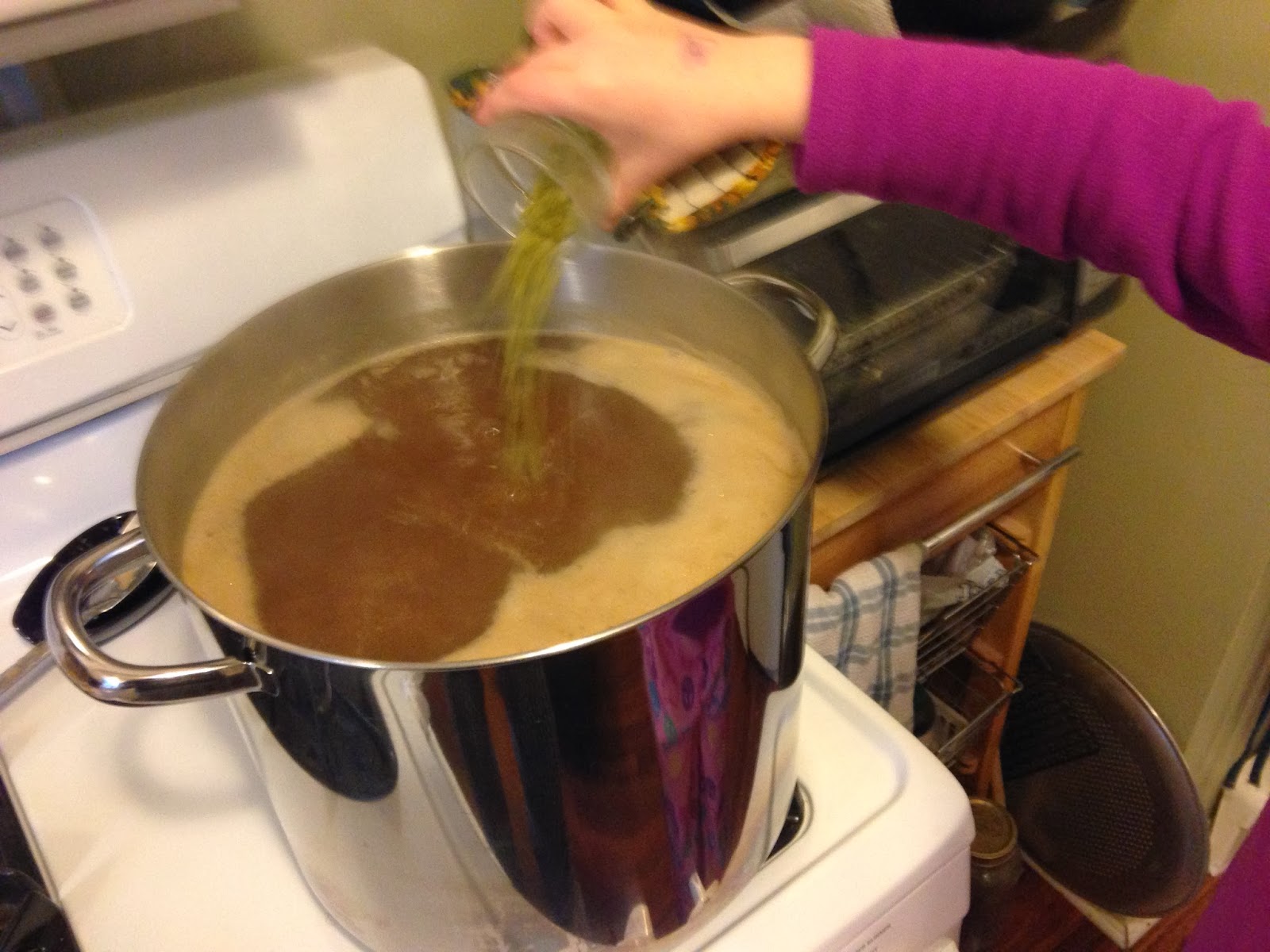 |
| Measuring out the grains |
One of my favorite smells in the world is the aroma of the indoor brewery. It's intensely grainy, bready, and sweet, and somewhere in there is the citrus/earthy/floral/pine of the hops - depending on the varieties called for in the recipe.
When I brew in the morning, the kids love waking up to those aromas. And when I brew in the evening, the fragrance can be strong enough to wake me up throughout the night.
Not everyone is so fond of it. My lovely wife thinks all hops smell the same - like new carpet. (I don't fully agree. I get a lot of stink weed from Amarillo.)
 |
| Grains waiting to be mashed |
As a concession, I'm resolving to brew more of my batches outside. I got a LP burner last year for the express purpose of brewing outside, but 1) I hate brewing in Kansas City's really hot or really cold weather, and 2) brewing inside on the stove is so much more convenient. If I need a Pyrex measuring cup, it's right there in the cupboard. I can easily wash equipment from the previous step while water is heating for the next. Or I can brew a cuppa or grab a bite without having to worry about a boil over from an unattended kettle.
But brewing outside has its advantages. The prime of which is . . . being outside! The same primal feeling I get when grilling outside I get when I brew outside. Away from distractions, just me and the wind in the trees. And the squirrels.
 |
| Happily fermenting away |
Mainly because I'm not used to it yet, I really had a hassle with this week's brew day (my Victory Blonde). It was WINDY. With 20-25 mph winds and buds on the trees, there were all manner of particles flying around in the air. But no worries - if they hit the boiling wort, they'll be sanitized. Right?
I also made a personal record for number of trips in and out of the house in a 3-hour period. That Pyrex measuring cup? Safely in the cupboard. Inside. And I'll need to wait to do all the cleaning up afterwards. Want to make a sandwich? Better keep an eye out that window to monitor the boil.
I know it'll get easier as I make my mental (or paper) checklist of all the equipment I need to take with me. But until then, I need to prepare myself for the prospect that this may feel a little less like relaxation and more like work.


